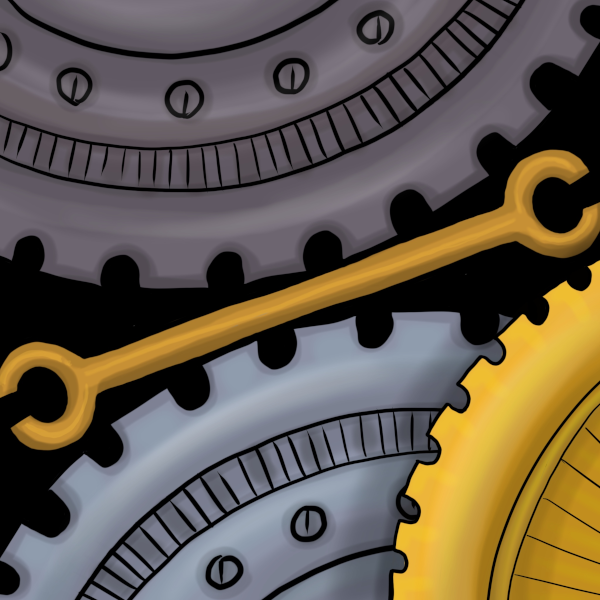Private industry handling a public utility is never a good idea, see: Texas power grid
internet should be treated like water and power and handled by the city.
The biggest problem in Texas is greedy politicians (Republicans) making it worse.
The government should never be in control of a means of free speech. You know who has Government-controlled internet?
Russia Iran China N Korea India Some EU countries Turkey Etc.
Which eu countries ?
Now I’m curious too
Right because having private companies in control of a means of free speech has always worked out fine
Vermont has several towns with as little as a thousand people that have fiber internet thanks to municipal cooperatives like ECFiber. Much of the state is a connectivity wasteland but it’s really cool to see some towns working together to sort it out.
Aren’t local ISPs essentially banned in a lot of places due to lobbying from the big players? Less abandoned and more actively stomping on its throat.
It was like that in all of Washington State from 1999 until it was repealed in 2021.
Before I moved back to the city, I used to use T-Mobile Home Internet in a very rural area and it was the absolute best internet you could get out there. It was about 70 MBPS down while the DSL in the area was max 10.The only other choices for the area was dial up, which was obviously even slower or satellite through HughesNet, which was super expensive and extremely data limited.
I currently have T-Mobile. I cracked their unit open and attached an external antenna which is installed on the roof. I’m getting about 250 stable. Fiber just became available in my area, but the price is more than what I’m paying now.
I have T-Mobile too. Would you mind explaining the process of adding an external antenna? I’d like to get 250 Mbps stable.
You have to open the unit and disconnect at least two of the internal antenna and plug in antenna adapters. Then you can run the coax from the exterior antenna to the unit and plug them in. Then you use an app to locate your closest tower and point the antenna towards that using the T-Mobile app to see your connection strength.
It’s actually really good, isn’t it? It makes me hopeful that maybe one day in the future we won’t need to run a wire to our houses for the internet just like how we don’t run wires to our houses for phone service anymore because nobody fucking uses landlines.
Edit: btw, check out my community i mod !t_mobile@lemmy.ml
I wish I could get tmo home internet. My only option is starlink and Verizon LTE, and Verizon has managed to ruin my credit multiple times over their own incompetence.
The area I was in did not officially support it but I knew it would work so when I moved before I just brought it with me and turned it on and it worked fine and after I left I told the new residents to just go in and purchase it and if need be give a different addressAnd it would work. And they did.
My signal is weak due to obstructions.
Our signal was pretty weak about minus 108 dBm at all times, but it was still enough to be functional and be better than everybody else’s internet in the area.
This is the best summary I could come up with:
In the absence of service from companies like AT&T, Comcast, Verizon and Charter, counties and small towns in rural America could build broadband networks for their residents themselves, which can make the difference between prosperity and poverty.
A historic provision in the 2021 infrastructure act upholds this tenet of digital democracy: $65bn under the broadband equity, access and deployment – or Bead – program to connect rural America to the world.
Clyburn, wide awake with an opportunity before him, asked Bailey to donate 100 tickets to a tournament for local kids and a couple hundred laptops he could give to students in rural Clarendon county, near Orangeburg.
Sanford Bishop, who represents rural south Georgia, told him about football players taking the team bus to McDonald’s after practice because they could get wifi in the parking lot, Clyburn said.
Barriers in South Carolina resemble those in at least 16 other states today, which, in the name of a “level playing field” – a term coopted by the conservative American Legislative Exchange Council (Alec) in draft language – keeps government entities from competing with private carriers, even in rural broadband deserts.
South Carolina hired Stritzinger away from running Revolution D, a rural broadband consultancy with a legacy of using real-world data to puncture questionable coverage maps promoted by internet carriers.
The original article contains 2,197 words, the summary contains 218 words. Saved 90%. I’m a bot and I’m open source!
I thought this was just a bad attempt at cutting down the content, but the original article is just as abrupt and stilted.
I skip these summaries entirely. Are they ever any good? I just slipped over them and assume it’s bullshit Ai I don’t care to read. I’ll just read the article if I really care.
I find them useful for skimming articles, but when it’s “saved 90%” like this they tend to be somewhat disjointed.
Where I live in Canada everyone thinks they need gigabit internet. My internet sales person was so sure that I needed at least 1 gig internet because I work from home and have a couple of people using YouTube at the same time . But I haven’t had a single issue with my 500 megabit internet . That was the lowest I could go , probably would of been fine with 200 - 300 .
And not a mention about Starlink? To me it seems like the obvious solution compared to digging cables to an individual rural homes. Personally I use cellural but not everyone lives within the coverage of these towers. Satellite internet on the other hand is global.
I tried Starlink, had high hopes, but unfortunately due to living sort of in a valley and being surrounded by numerous 100+ foot trees, service would cut out every 10-15 minutes. Wasn’t viable for video conferencing or large downloads.
Cellular was OK, but the speeds could vary wildly and really only peaked at maybe 100/30.
Ultimately, I ended up paying a local provider to bury a line directly to my house for me (well into the 5 figure cost). Worth it.
Removed by mod
Because usable cellular Internet is relatively new, the cable/dsl/etc providers should have upgraded their systems literally decades ago and didn’t, funneling federal money intended for that purpose to CEO bonuses instead.
cable/dsl/etc providers should have upgraded their systems literally decades ago and didn’t, funneling federal money intended for that purpose to CEO bonuses instead.
So why look to them now like the other person was downvoted for asking? Nothing has changed and they still have no reason to run cable out to these communities.
The short answer is lobbyists.
If they are so rural ISPs won’t take them, why would a cell company deploy 5G in a super sparse area?
For example TMO and VZW will only hand out home cell modem if you live within half mile of a major interstate. If not out of luck aside from Starlink.
Well I tried it for home Internet and it was mostly fine but was a little less reliable than wired. I think reliability is important.
Removed by mod
Yeah, same










